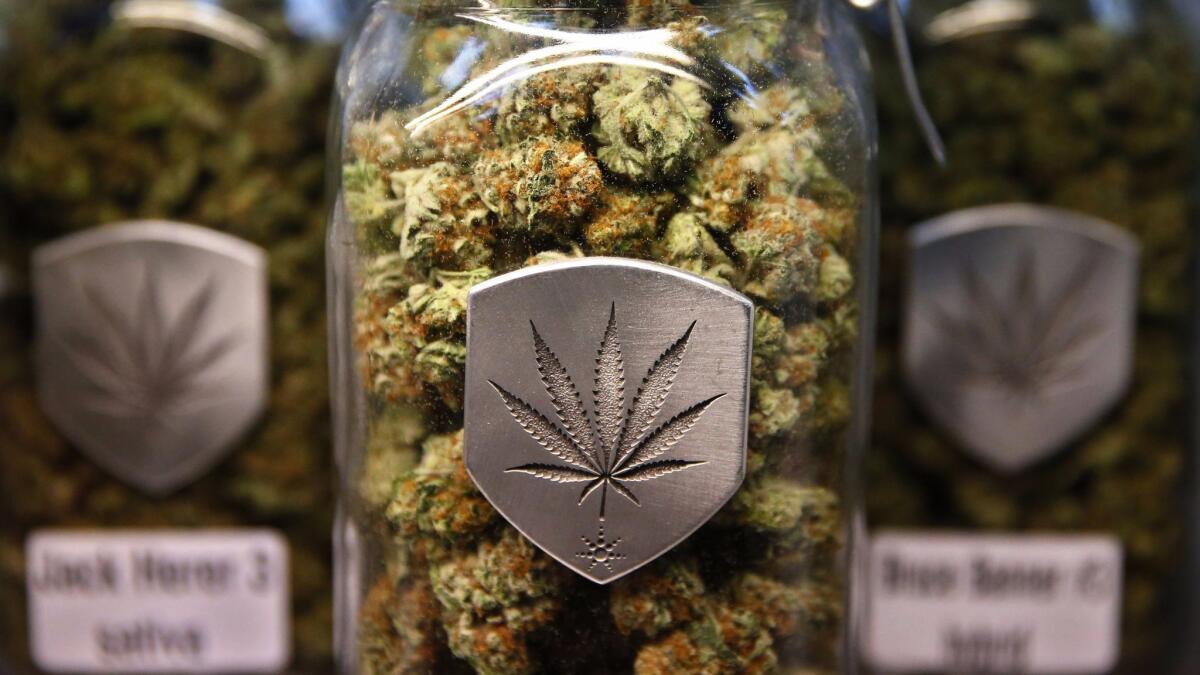California slapping high taxes on marijuana, causing sticker shock for some

The taxes could influence where the marijuana is grown and how edibles are produced.(Nov. 6, 2017)
California’s legal marijuana marketplace is coming with a kaleidoscope of new taxes and fees that could influence where it’s grown, how pot cookies and other munchies are produced and the price tag on just about everything.
Be ready for sticker shock.
RELATED: Will high taxes allow black market in pot to thrive?
On a retail level, it costs about $35 to buy a small bag of good quality medical marijuana in Los Angeles, enough to roll five or six joints.

But in 2018, when recreational sales take hold and additional taxes kick in, the cost of that same purchase in the new market is expected to increase at the retail counter to $50 or $60.
At the high end, that’s about a 70% jump.
RELATED: Veteran pot growers see the end of a way of life
Medical pot purchases are expected to rise in cost too, but not as steeply, industry experts say.
Or consider cannabis leaves, a sort of bottom-shelf product that comes from trimming prized plant buds. The loose, snipped leaves are typically gathered up and processed for use in cannabis-laced foods, ointments, concentrates and candies.
Growers sell a trash bag stuffed with clippings to manufacturers for about $50. But come January, the state will tax those leaves at $44 a pound.
That means the tax payment on a bag holding 7 or 8 pounds would exceed the current market price by five or six times, forcing a huge price hike or, more likely, rendering it essentially valueless.
“All it would become is compost,” predicted Ryan Jennemann of THC Design in Los Angeles, whose company has used the leaves to manufacture concentrated oils.
Governments struggling to keep up with the cost of everything from worker pensions to paving streets are eager for the cascade of new tax money from commercial pot sales that could eventually top $1 billion statewide.
But higher taxes for businesses and consumers give the state’s thriving illicit market a built-in advantage. Operators in the legal market have been urging regulators to be aggressive about shutting down rogue operators.
Donnie Anderson, a Los Angeles medical cultivator and retailer, predicted the higher level of state taxation next year is “just going to help the illicit market thrive.” He said more needs to be done to cut the cost, especially for medical users, many of whom won’t be able to absorb a price jump.
The increased tax rates are just one part of California’s sprawling plan to transform its long-standing medical and illegal markets into a multibillion-dollar regulated economy, the nation’s largest legal pot shop. The reshaping of such an expansive illegal economy into a legal one hasn’t been witnessed since the end of Prohibition in 1933.
The change has come haltingly. Many cities are unlikely to be ready by Jan. 1 to issue business licenses, which are needed to operate in the new market, while big gaps remain in the system intended to move cannabis from the field to distribution centers, then to testing labs and eventually retail shops.
The path to legalization began last year when voters approved Proposition 64, which opened the way for recreational pot sales to adults. Medical marijuana has been legal in California for about two decades.
Come January, state taxes will include a 15% levy on purchases of all cannabis and cannabis products, including medical pot.
Local governments are free to slap on taxes on sales and growing too, and that has created a confusing patchwork of rates that vary city to city, county to county.
In the agricultural hub of Salinas, southeast of San Francisco, voters approved a tax that will eventually rise to $25 a square foot for space used to cultivate the leafy plants, a rate that’s equivalent to about $1 million an acre.
But farther north, in the pot-growing mecca of Humboldt County, rates will be a comparative bargain, ranging from $1 to $3 for a square foot for cultivation space.
By some estimates Humboldt County has up to 15,000 unregulated pot grows, and Supervisor Ryan Sundberg said he was eager to fashion a tax scheme that would encourage cultivators to come into the legal system and adhere to environmental regulations.
More to Read
Sign up for Essential California
The most important California stories and recommendations in your inbox every morning.
You may occasionally receive promotional content from the Los Angeles Times.









